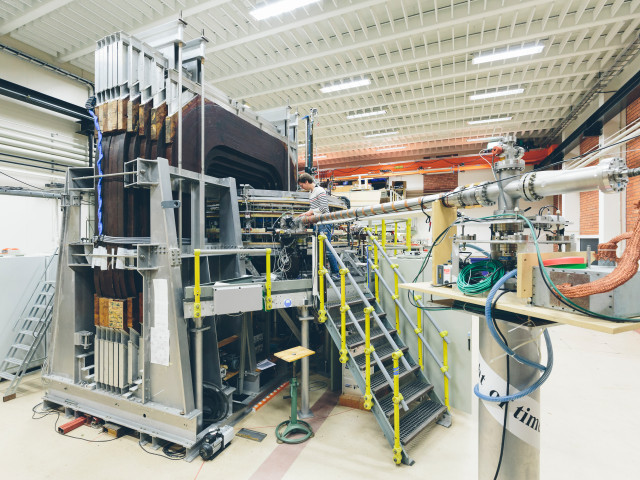Elemental and compound semiconductors, differences in their bandstructures, crystal structure, electrical and optical properties, shallow and deep level dopants , bulk and epitaxial crystal growth techniques, heterostructures, quantum wells, quantum wires, quantum dots, bandgap engineering, optical and electronic components, process technology for fabricating these components, organic semiconductors..
SK2754 Advanced Semiconductor Materials 7.5 credits
This course has been discontinued.
Decision to discontinue this course:
No information inserted
Information per course offering
Course offerings are missing for current or upcoming semesters.
Course syllabus as PDF
Please note: all information from the Course syllabus is available on this page in an accessible format.
Course syllabus SK2754 (Autumn 2017–)Content and learning outcomes
Course contents
Intended learning outcomes
The aim of the course is to give
- knowledge on the direct and indirect bandgap semiconductors, their transport and optical properties,
- an understanding of various bulk and epitaxial techniques used to fabricate the compound semiconductors,
- usefulness of doping and exploitation of compound semiconductor heterostructures for several optical and electrical components,
- introduction to organic semiconductors.
After the course, the student should be able to use the properties of compound semiconductors for fabricating high performance electronic and optical component structures. One should be able to propose the necessary processes for fabricating these components and relate their performance to the component structure. One should also be able to understand how an organic semiconductor functions.
Literature and preparations
Specific prerequisites
Bachelor's degree in physics, electrical engineering or equivalent degree. Knowledge in solid state physics
Literature
Semiconductor Devices, Jasprit Singh. Upplaga: Förlag: John Wiley & Sons År:2001 ISBN: 0-471-36245-X
Examination and completion
Grading scale
Examination
- TEN1 - Examination, 7.5 credits, grading scale: A, B, C, D, E, FX, F
Based on recommendation from KTH’s coordinator for disabilities, the examiner will decide how to adapt an examination for students with documented disability.
The examiner may apply another examination format when re-examining individual students.
If the course is discontinued, students may request to be examined during the following two academic years.
The exam consists of two parts. Part 1 is knowledge test and part 2 is lab course. To gain Fx and higher, one must pass both the parts. There are four lab courses, namely, MOVPE, X-ray diffraction, photoluminescence and Hall measurements. A lab report on each of the lab courses should be written. An approved lab report is a must to have the grade A-Fx. The association of grade with the percentage of marks is as follows: F:
Other requirements for final grade
Passed grade in all the parts.
Examiner
Ethical approach
- All members of a group are responsible for the group's work.
- In any assessment, every student shall honestly disclose any help received and sources used.
- In an oral assessment, every student shall be able to present and answer questions about the entire assignment and solution.
Further information
Course room in Canvas
Offered by
Main field of study
Education cycle
Supplementary information
The course is given for the last time HT17.Replaced by SK2822